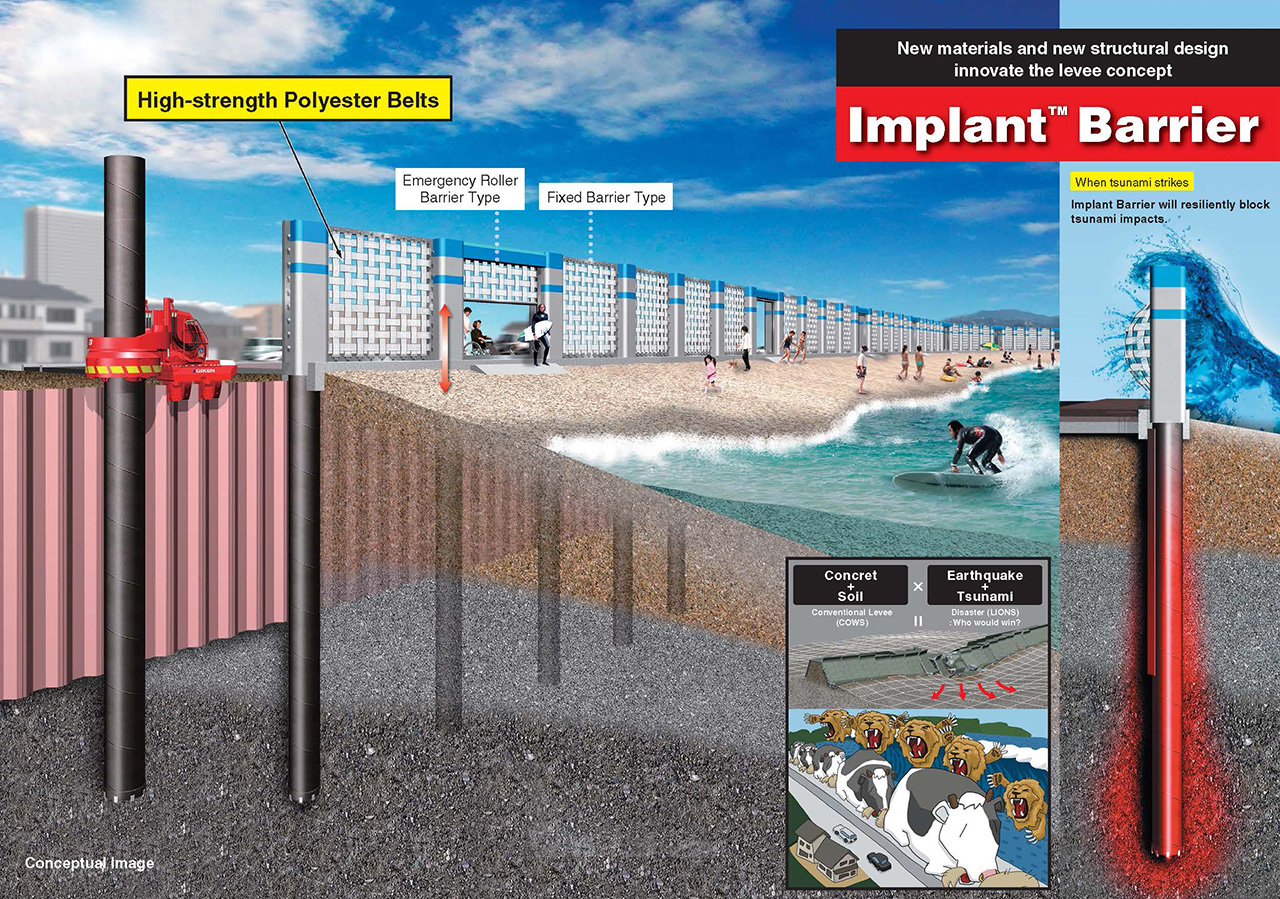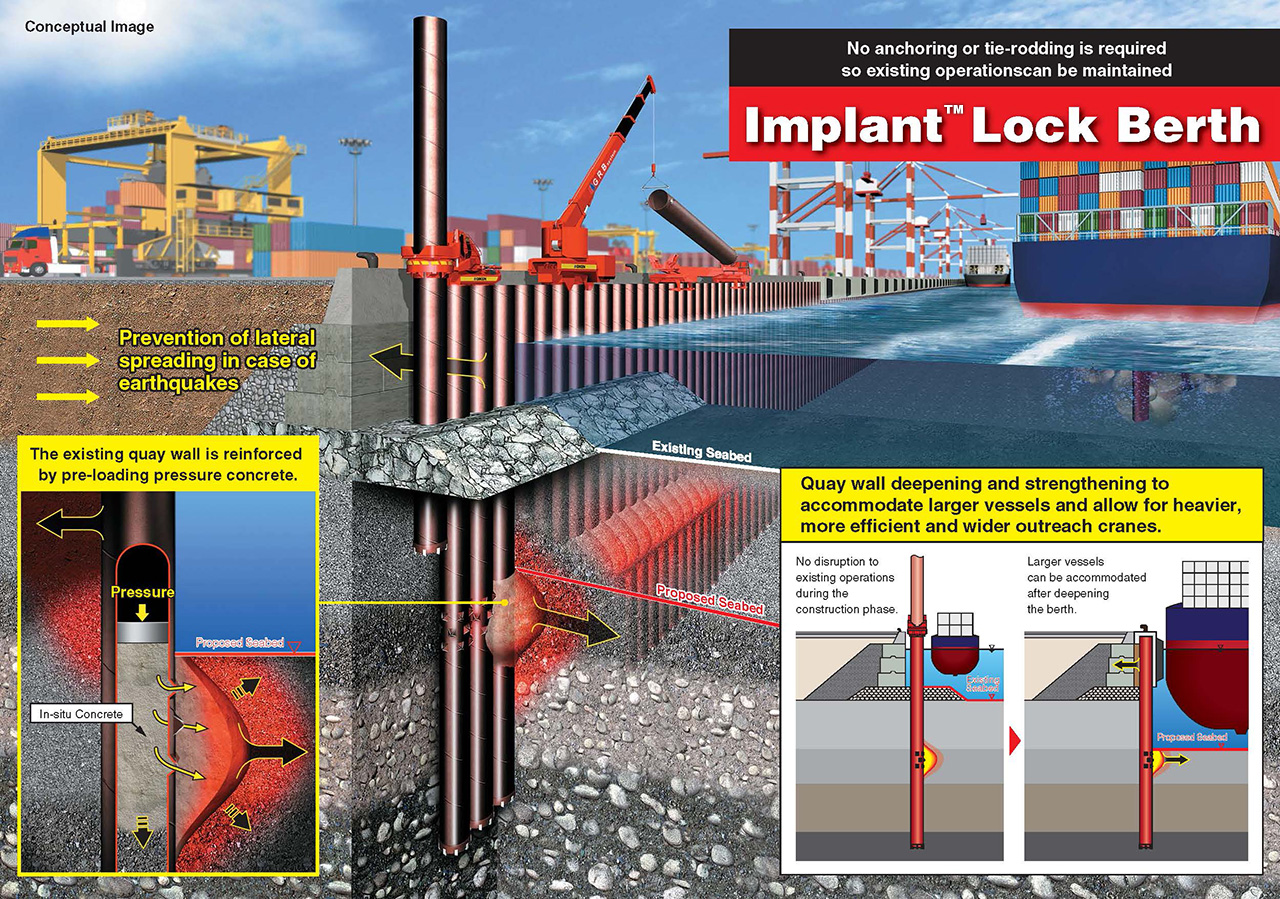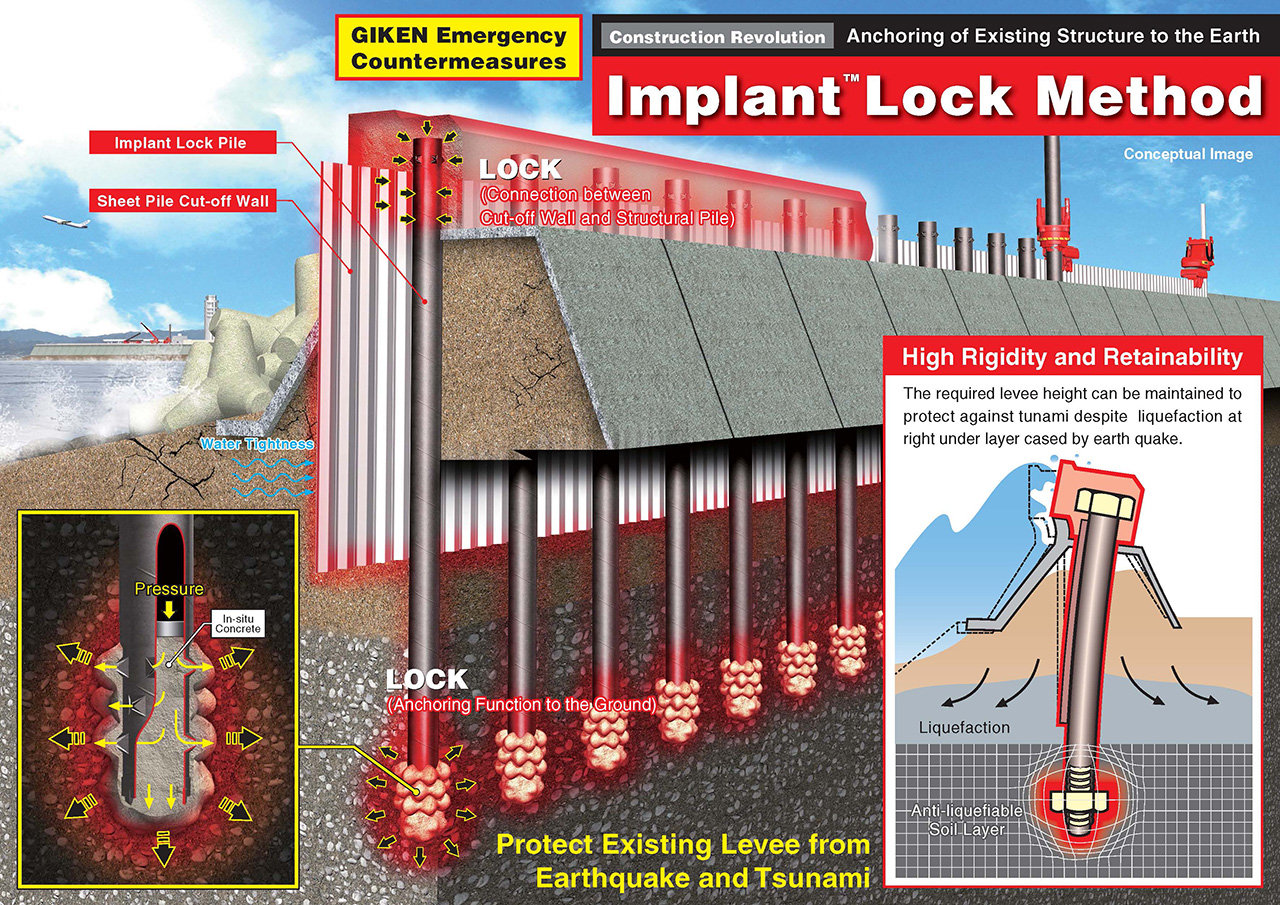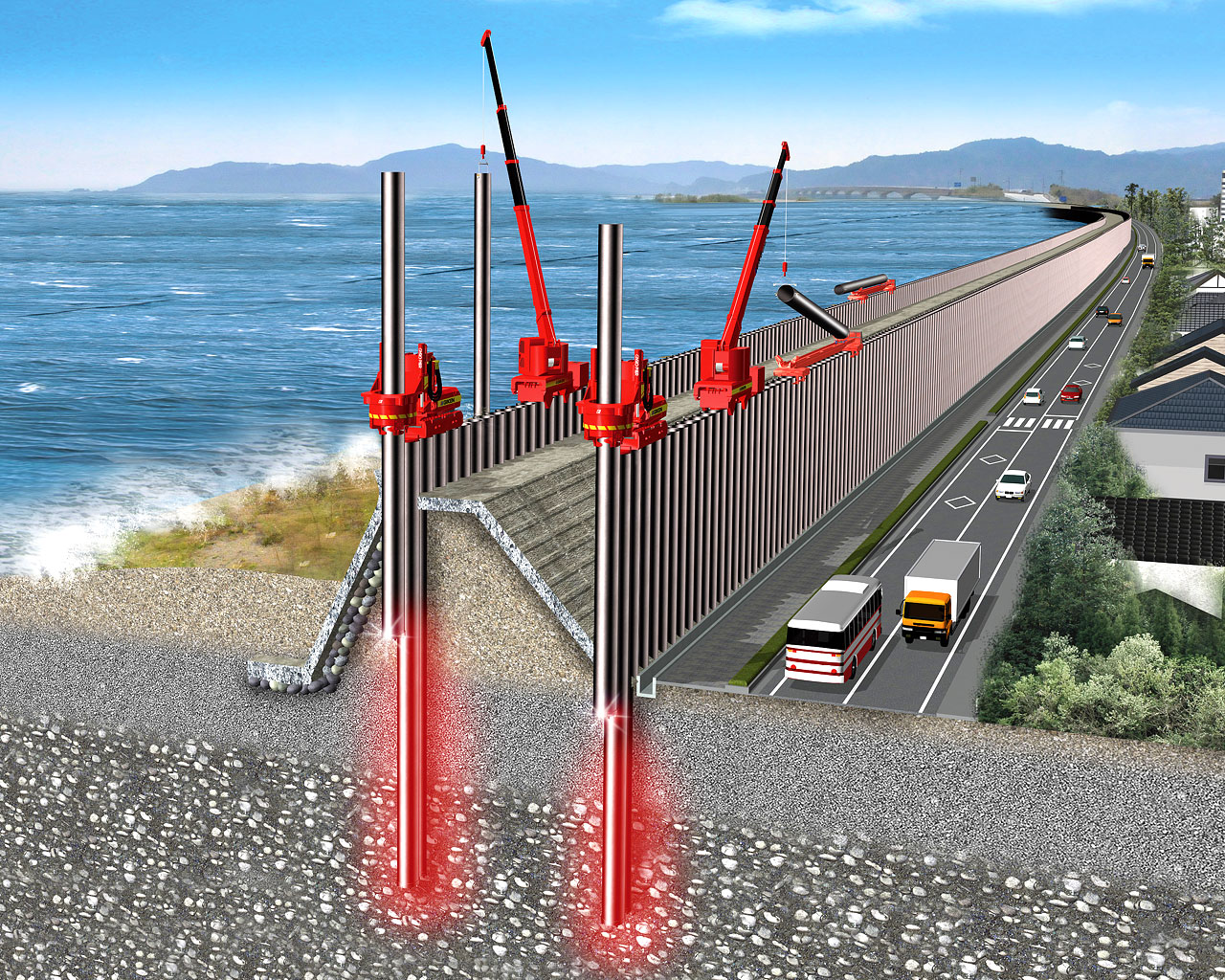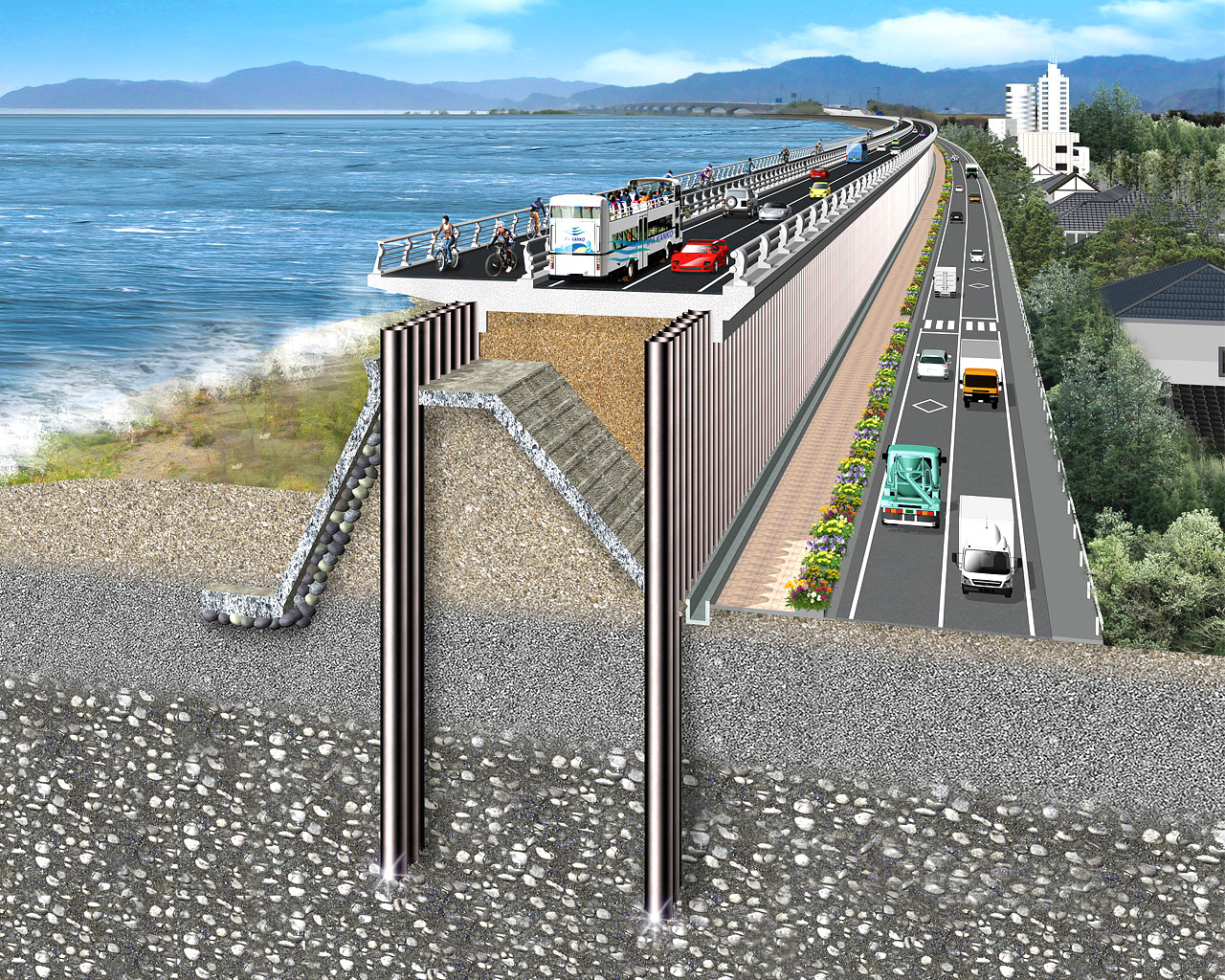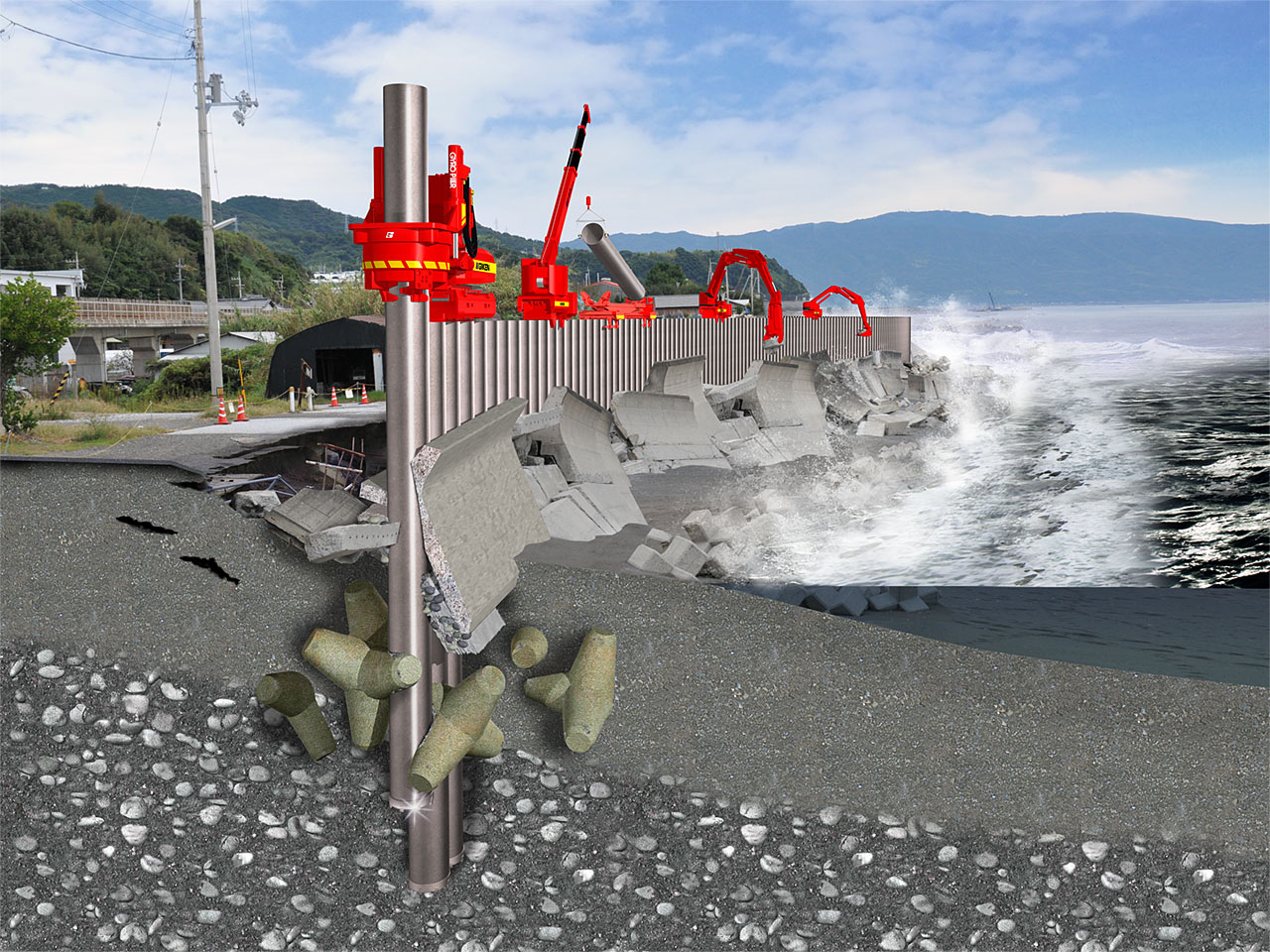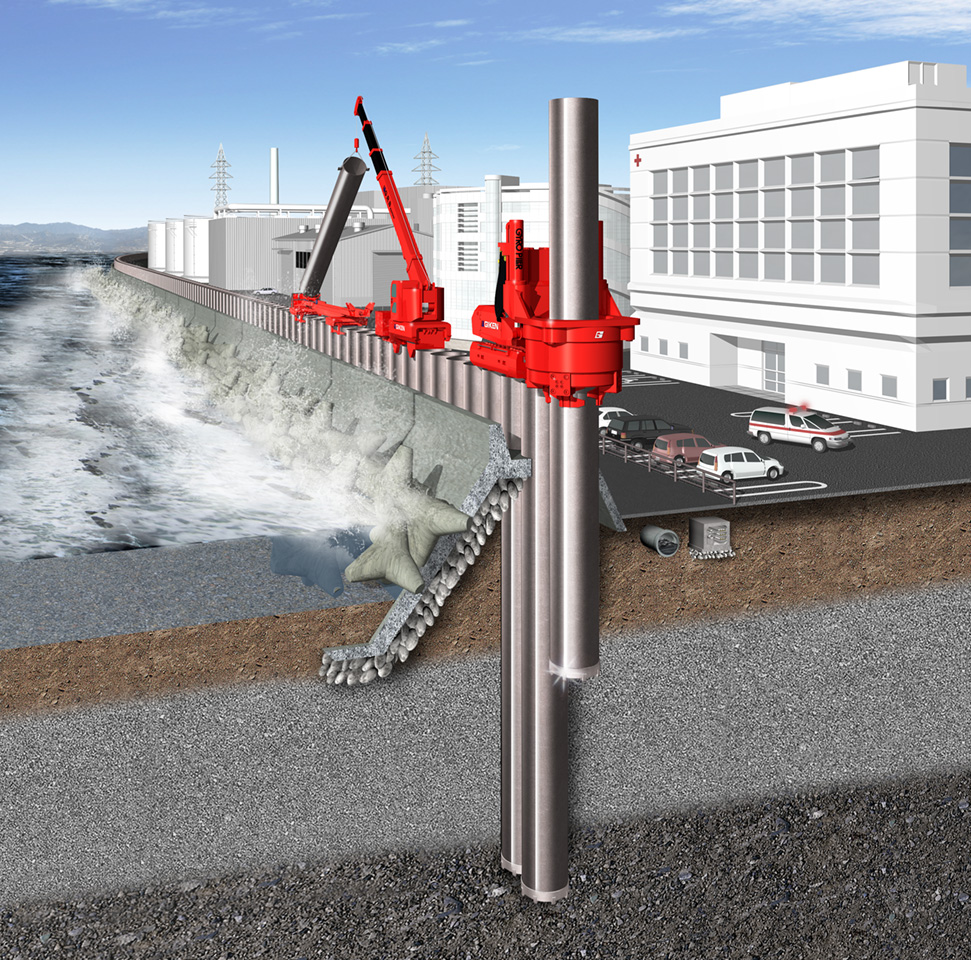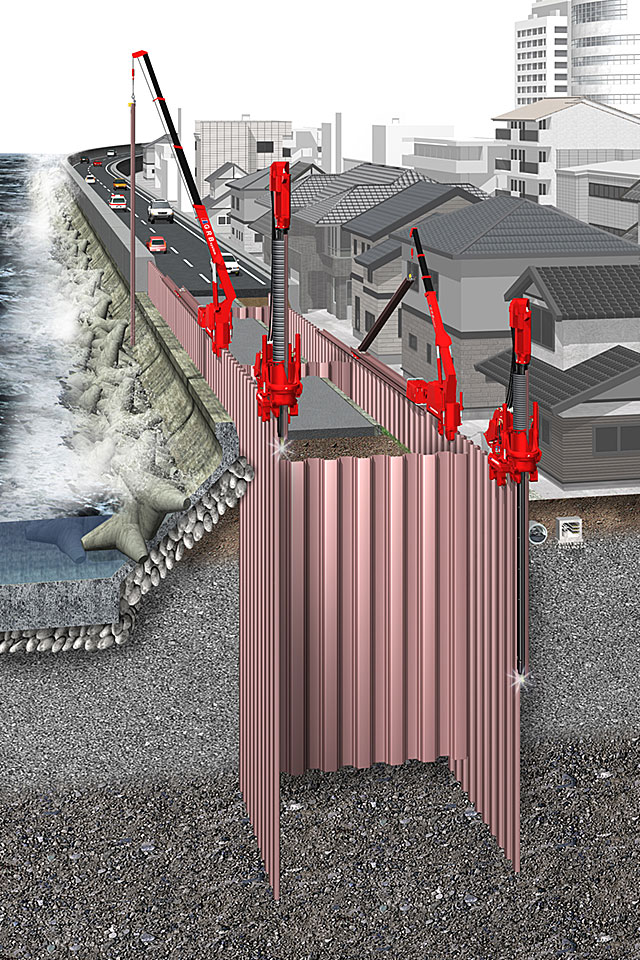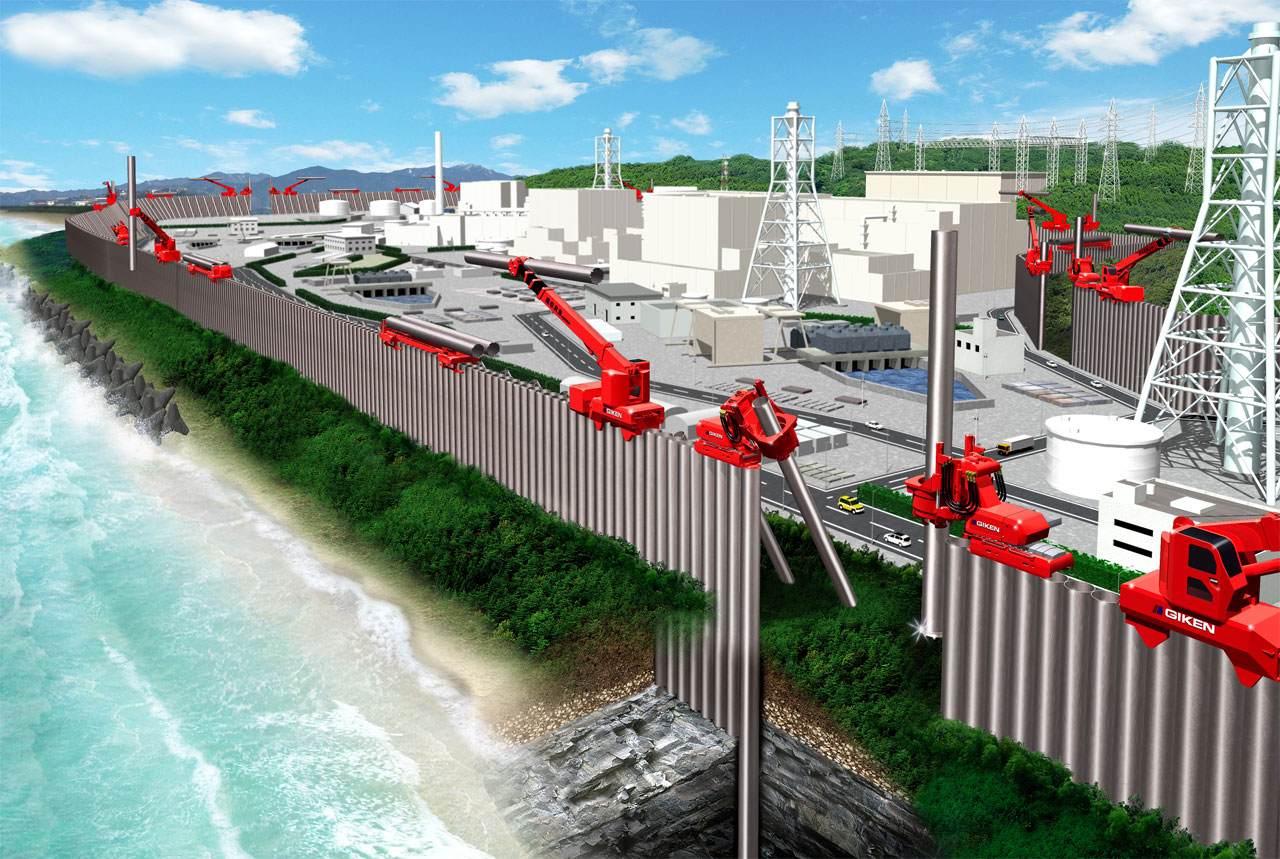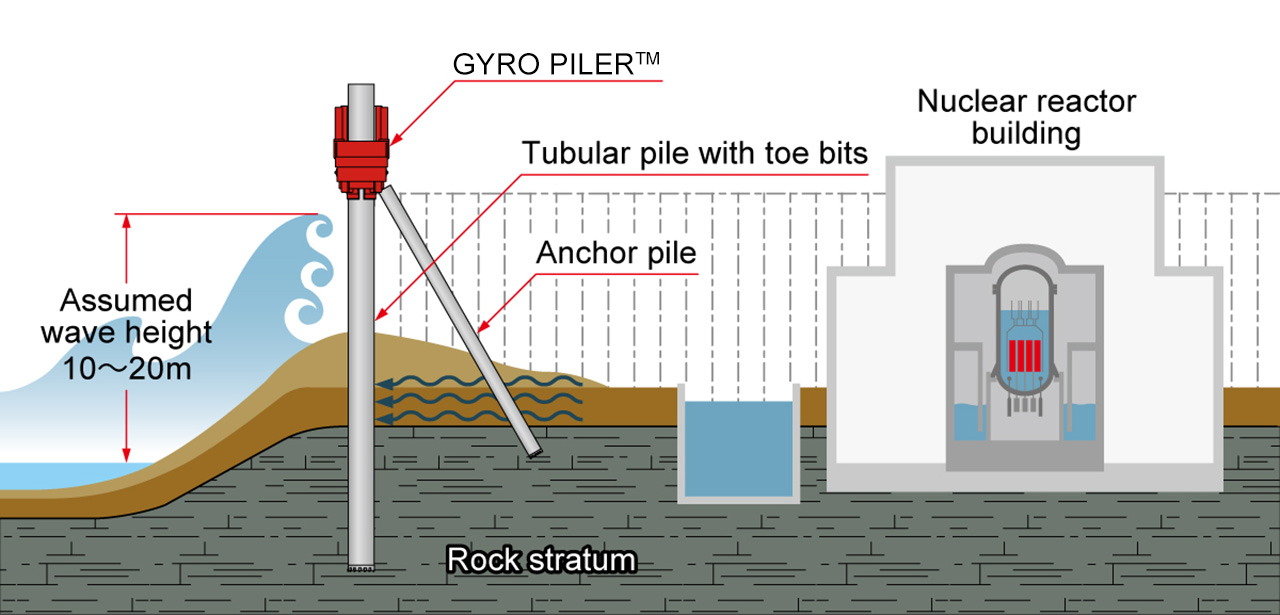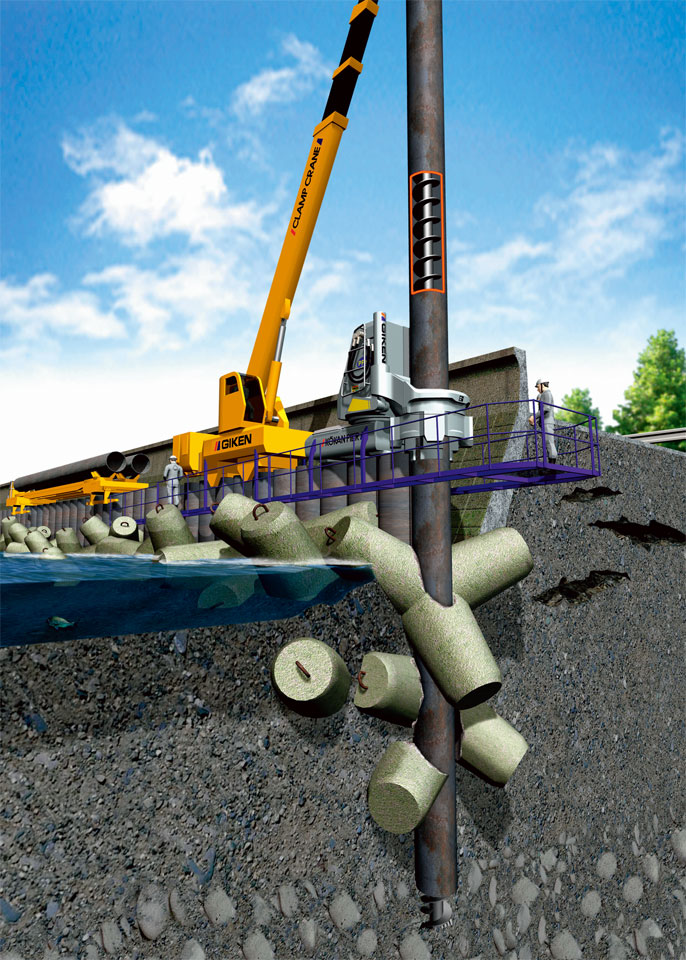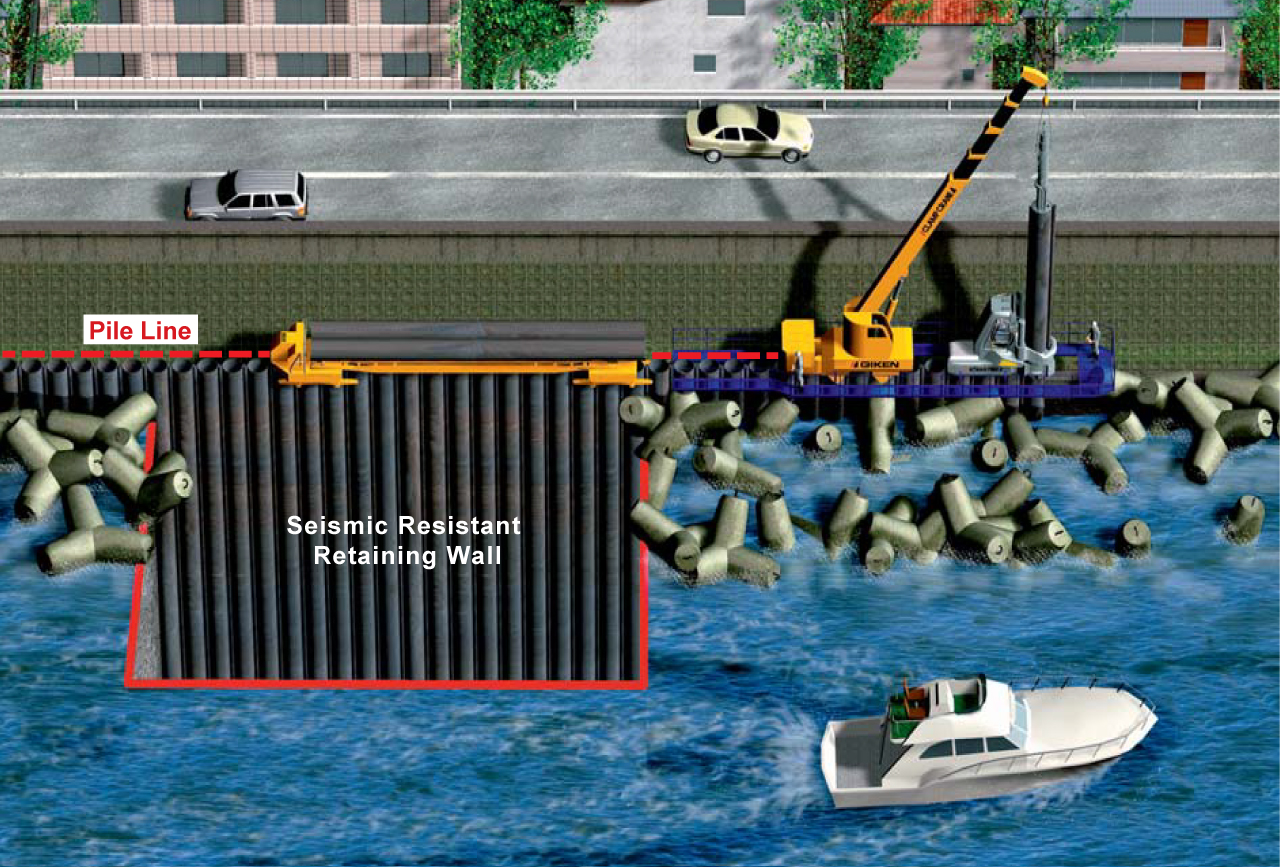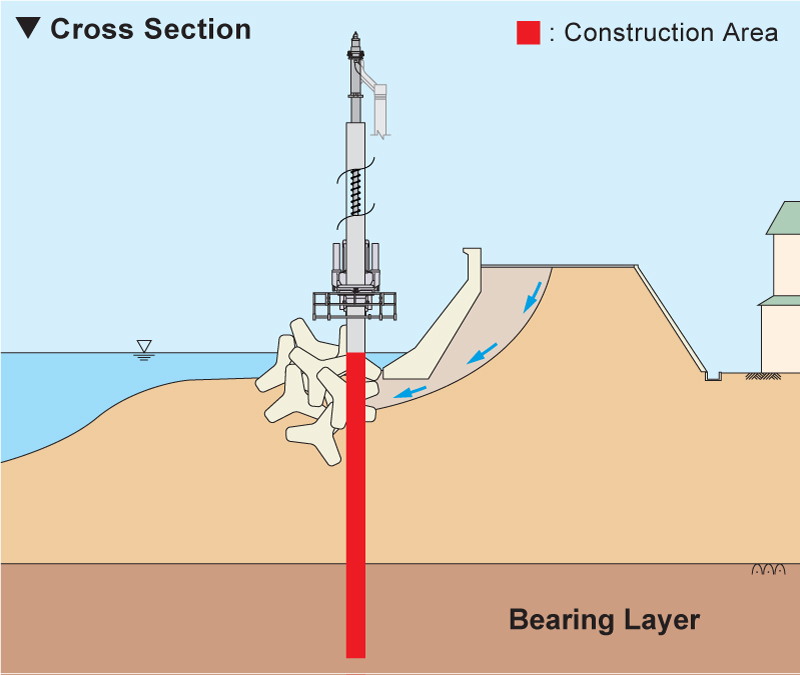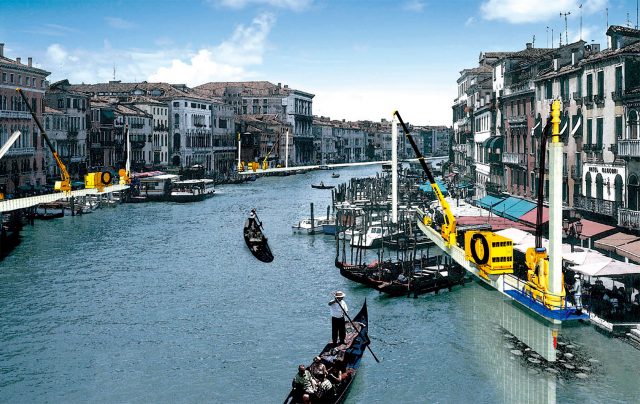Many cities in Japan are located on alluvial plains facing the coast and river basin areas, so it is not an exaggeration to say that levee and dikes are protecting the lives of people. There is an urgent need for regenerating and strengthening coastal and river levee to protect lives and assets from numerous natural disasters such as tidal surges and high waves from Typhoons, and tsunami from earthquakes.
For the reinforcement and repair of levee, there are quite a lot of cases where the existing foundations and wave-dissipating blocks are obstacles that hinder construction. Using the Gyropress MethodTM with rotary cutting press-in of tubular piles with a bit attached to the tip, allows the building of a continuous wall of Implant Structure while leaving the structure and underground obstacles as is, for the rapid regeneration and reinforcing of functions.
By installing a continuous wall of high-rigidity tubular piles inside the levee, this prevents collapse of the levee due to liquefaction or ground subsidence caused by an earthquake. Raising the height of the levee is also possible at the same time, enabling the reinforcing of countermeasures for tidal surges and flooding. Even if the levee were to be damaged by flooding or tidal surge, the continuous wall of tubular piles of Implant Structure will continue to maintain the disaster prevention function of providing resistance.
Steel sheet piles are installed into the embankment to a depth determined for proper stability and/or cut-off of flow. Also, liquefaction of the levee can be prevented by enclosing it with twin sheet pile walls. Thus, the levee can withstand large external loading and the levee crest can remain in place, even in catastrophic events.



